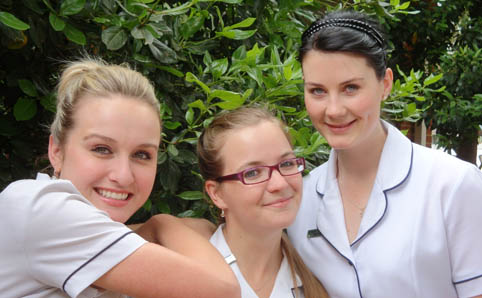 |
|
The UFS team which won the national competition includes, from left to right: Anke Malan, Raylene Hauman and Sonelle Vermeulen.
|
Two students in our Faculty of Health Sciences won awards at a Pfizer UKZN Young Health Scientists Research Symposium, recently held at the Westville Campus of the University of KwaZulu-Natal.
Hendrik Kruger, a medical student, represented his group, which won the clinical category with the paper “Injury patterns of occupants surviving motor vehicle accidents in the Free State”. This presentation was based on a study which is the first of its kind in South Africa.
The group with Anke Malan from the UFS Department of Nutrition and Dietetics as presenter received the prize in the community-based category with the presentation “Knowledge, practices and perceptions of undergraduate students at the UFS regarding the risk factors of osteoporoses”. Anke’s team was also nominated as the overall winner of the symposium. Presentations were delivered in three categories, namely clinical, community-based and laboratory research.
Each winner received a cash prize from Pfizer. Other institutions have already contacted some of the researchers regarding further studies in the respective areas.
“The standard of the studies presented was extremely high,” said Prof. Jenni Smit from the University of the Witwatersrand, keynote speaker and adjudicator.